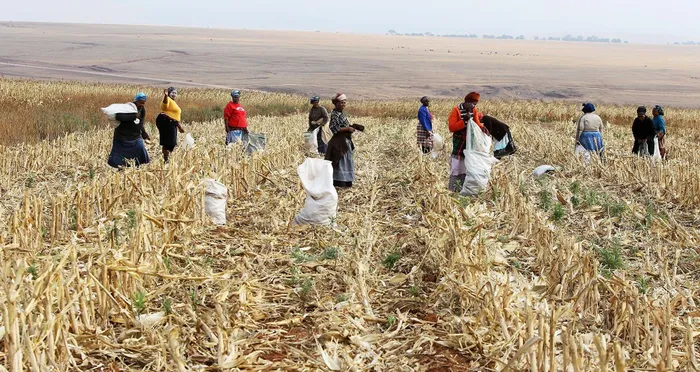Concerns rise over quality and quantity of maize as South Africa's harvest lags behind
AGRICULTURE

The Agricultural Business Chamber of South Africa has raised concern about the early maize harvest currently being lower than last season’s yield
Image: Phando Jikelo/Independent Newspapers
The Agricultural Business Chamber of South Africa (Agbiz) has issued a stern warning regarding the early maize harvest, noting a significant decline compared to last season's yield.
With the agricultural landscape shaped by unpredictable weather patterns, both farmers and agricultural associations are echoing concerns about the implications of the current harvesting conditions.
Wandile Sihlobo, chief economist at Agbiz, said that South African farmers and farmworkers were hard at work across the country.
“The maize farmers are busy harvesting the 2024-25 crop. In the week of June 13, South African farmers delivered 851 814 tons of the new season maize to commercial silos. This was the seventh delivery for the new season, bringing the overall maize deliveries so far to 3.3 million tons,” he said.
Sihlobo said compared with the overall volume delivered during the same period in the last season, the current volumes were down 46% due to the season's slow start.
“The late start of the season, along with the extended rainfall window into April, has raised some concerns about quality,” he said.
“Indeed, if one examines the maize delivered so far to the silos, the quality is an issue in some regions, particularly with white maize. For example, in the 3.3 million tons delivered so far, about 1.4 million tons is white maize.”
Sihlobo said that of the 1.4 million tons of white maize delivered, the first grade (WM1) accounted for 74%.
“In regular seasons, this figure would typically exceed 90%. We have observed an increase in the second grade (WM2), which accounts for 22% of the crop delivered to date.”
In the case of yellow maize, Sihlobo said the crop appeared to be in good condition, with 92% of the delivered crop being first-grade (YM1).
“Still, we are early in the season, and we will have a more accurate view of the quality conditions later.”
Jaco Minnaar, president of Agri SA, said that current conditions were because of the amount of late-season rain up to April; with the summer grain harvesting season starting about a month later.
“That caused a bit of isolated demand shortages in the market, but harvest is now in full swing and supply has picked up a lot. Yields overall are fairly in line with the crop estimates committee's prediction, so it seems that we will have more than enough crops to feed SA and neighbouring countries,”
Minnaar added that of concern this year was the quality of the crop caused mainly by the quantity of late-season rains.
“It is too early to say where we will end the season, but we are heading towards the worst quality season in a few decades at least,” Minnaar said.
“No need for fear; however, this might cause mills to use lower quality maize, resulting in lower quality maize meal. It will have no effect on the nutritional quality or safety; it will only look a little bit less white.”
Francois Rossouw, the CEO of Southern African Agri Initiative (Saai), said that the current maize delivery figures were notably lower than last season, but it was too early to sound the alarm.
“Many farmers, particularly in the summer rainfall regions, experienced delays in harvesting due to persistent and heavy rains. As a result, a significant portion of the crop is still in the field and has not yet reached silos,” Rossouw said.
“We expect deliveries to pick up sharply in the coming weeks. It’s important to view these numbers in context before drawing conclusions about the overall size or health of the harvest.”
TLU SA general manager, Bennie van Zyl, said the reduced maize harvest currently was expected due to farmers receiving very late compared to previous years.
“The harvest is late, and in a lot of cases, our farmers are busy harvesting. In the previous years, farmers would be harvesting earlier at this stage. I wouldn't compare it to the previous maize harvest year before we finalise the whole harvest of this year's crop,” Van Zyl said.
“In some areas, the maize crop is still not being harvested because the soil is too wet, and in other places, the maize is too wet to be harvested. I don’t think it’s a reason for concern; we just have to wait for the season to end.”
BUSINESS REPORT